Like most American cities, Fort Worth is dotted with movie theaters. Old movie theaters. One of them, the Ridglea Theater, has been restored to its former glory. Another one, the Rose Marine Theater, has been modernized and repurposed. The rest? Well, they’re empty and abandoned. And will likely stay that way for a long time.
The problem is that, like most buildings from the 1950s and even earlier, the theaters are “purpose-specific,” said Kate Schwarz, preservation resource center manager for Historic Fort Worth Inc., a nonprofit whose members attempt to preserve Fort Worth’s historic identity through education and leadership. Historic Fort Worth Inc. programs include membership tours of private and public buildings, restoration and property management, historic property research and marketing of endangered properties.
“It requires imagination to come in and look past some of the problems with the buildings and imagine a new use,” Schwarz said. “Cost is a huge problem, too. Things like that can be very expensive.”
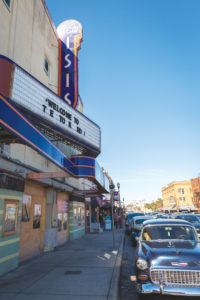
Another issue with the theaters, Schwarz said, is that times have changed. Theater chains such as Rave, AMC, and Cinemark have changed the way society views moviegoing. Many of the old theaters are single-screen with anywhere from 600 to 1,000 seats.
“Continuing to be theaters is not ideal for some of these,” Schwarz said. “But there is a demand for mixed-use venues featuring movies, live music, and things of that nature in Fort Worth.”
Amy McNutt, who cofounded Spiral Diner vegan restaurant with her husband, filmmaker James Johnston, agrees. McNutt has been looking for a space to open a multi-screen theater with an auditorium and rather than look to renovate one of the existing theaters, she is looking to start from scratch.
“We looked into renovating an older space and really saw that the cost was about the same to build from scratch and make what we wanted to make,” McNutt said.
Like Schwarz, McNutt said the purpose-specific nature of the old theaters is what could be holding them back.
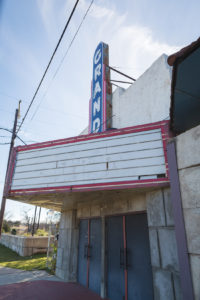
Photo by Vishal Malhotra.
“The old palaces aren’t feasible to use anymore because you don’t have 800 people showing up to one movie anymore,” she said. “Getting 150 people to come out and watch one movie is good these days, but for big, 800-or-more-seat theaters, it’s just not enough to even turn on the lights.”
Many of the spaces’ features just aren’t adaptable. For example, the sloped concrete floors that allow for people in the back rows to see the screen are now a liability to anyone trying to renovate the space for another purpose.
The moviegoing experience has changed dramatically, McNutt said. The trend is to downsize and offer more to the customers than simply moving pictures.
“Theaters do draw large crowds for certain movies like Star Wars and things like that,” McNutt said. “But, realistically, you can’t draw crowds like that for every movie anymore, so the big trend is now, even with big theaters like Rave and others, is to kind of reduce seating and use the big comfortable chairs, the best possible sound system, picture, and things like that to give the [people who] do come out the best experience possible.”
******
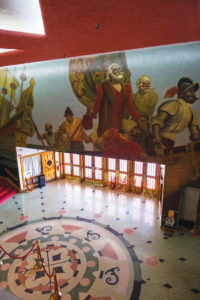
One of the more publicized theater renovation success stories is the Ridglea. Built in 1950 on Camp Bowie Boulevard in a Mediterranean style, the front façade clad in tan stone and the lobby graced with terrazzo flooring, the theater has been restored fully and is on the national and state registers of historic landmarks, said Amy Herrig, daughter of Gerald Shults, who, with the help of their corporation, Amy Lynn Inc., purchased the 1,400-seat space for, reportedly, $1.8 million in December 2010.
“It was sad to see when we first got it,” Herrig said. “When we did the remodeling for the [Ridglea’s] dinner theater, it was kind of torn to pieces, the beautiful floor had been torn to pieces, literally.”
Herrig said the project became a labor of love for her father who was born around the time the theater opened. Shults owns the Gas Pipe chain of smoke shops.
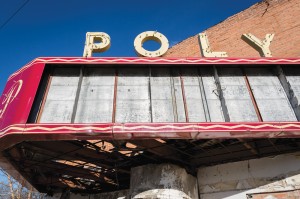
“It’s a special time for him, and the theater was about to be destroyed,” Herrig said. “He is an entrepreneur and loves a good challenge. There was so much controversy surrounding it being torn down, and it was so important to be saved and something to be proud of. It had lost its nobility, for lack of a better word.”
The controversy was the notion that June that Bank of America was considering purchasing the property with plans to possibly demolish all of the building or portions of it. The plans fell through, allowing Amy Lynn Inc. to take over.
The challenges in restoring the Ridglea and getting on the national and state registries illustrate what’s facing the potential owner of an abandoned old theater. Herrig said the job is not as simple as maybe restoring a house or remodeling an office.
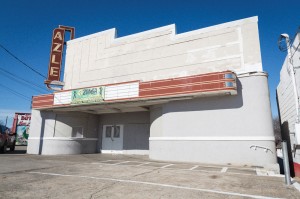
“What wasn’t a challenge?” Herrig asked. “Finding the right people to do the job was a major challenge. This isn’t a job you would just want to give to any contractor. Our architect’s father ran the projector back when it was first open, so he understood the nature of what we were discussing and the scope of the project. This is not like a house. This was very specific. We had to track people down that specialize in terrazzo flooring. We found people who specialize in murals to restore the mural.”
The original mural, depicting the first Spanish explorers arriving in America, has been restored and sits right above the entrance to the theater on the inside of the main lobby.
The goal was to ensure the theater could never be torn down, which is why getting on the national and state registries was so important –– only the theater in its “natural state” would be accepted. This meant that every single specification had to match the original style. Even slight modernizations to the restrooms and some lighting had to be approved, Herrig said.
“Finding the right drapes and the curtain that comes across for the stage, finding people to make those specific things was extremely challenging,” she said. “The marquee, everything was specific. Even the lighting underneath the canopy into the entry is original. But we wanted it to be protected forever, and now it is.”
******
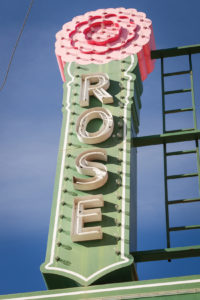
Another example of success is the Rose Marine Theater. Sitting on North Main Street near the heart of the Stockyards, the sumptuous building built in 1917 is managed by Artes de la Rosa, a nonprofit performance art group. Artistic director Adam Adolfo said the theater has been an outlet for Latino culture throughout its lifetime.
“In the ’40s and ’50s, it was one of the only [theaters] fully dedicated to Latino film and arts,” Adolfo said.
Owned by the City of Fort Worth, Rose Marine has been renovated but not restored, Adolfo said. It was renovated in 1999, not long before Artes de la Rosa began managing it.
“Much like the Casa Mañana, the city is the leaser and wants the space to be used to help the community,” Adolfo said. “We are pretty diverse, not only a theater company … [we also] host mainstream musicals that have a Latino flavor, and we have an award-winning youth program.”
Adolfo said they also show films, mostly international films but sometimes a mainstream picture as long as it falls within the mission of the organization, which is to celebrate Latino art and culture.
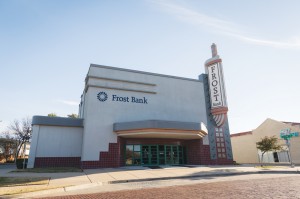
What keeps both the Rose Marine and Ridglea going, Herrg said, is the diversity of offerings.
“You have to offer more than just movies,” she said. “We offer a lot of great things to the community, from renting the theater out for wedding and charity events to hosting the Texas Boys Choir and local school programs, and we’re happy to do that. It’s a nice thing to be able to do and give back to the community.”
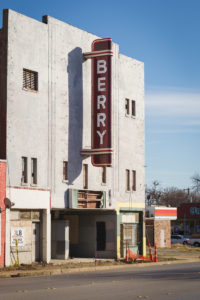
McNutt said it will take some imagination and creativity to put architectural gems such as the Azle Theater, Berry Theater, and the New Isis Theater to use, but it can be done.
“The old palaces, even though they are so beautiful and it’s sad to see them die, but it’s the way the world is now,” she said. “It’s cool to see the ones that do make it, you know? But to be an everyday theater like that, like the Majestic out in Dallas or some like those, you have to offer more than just movies.”



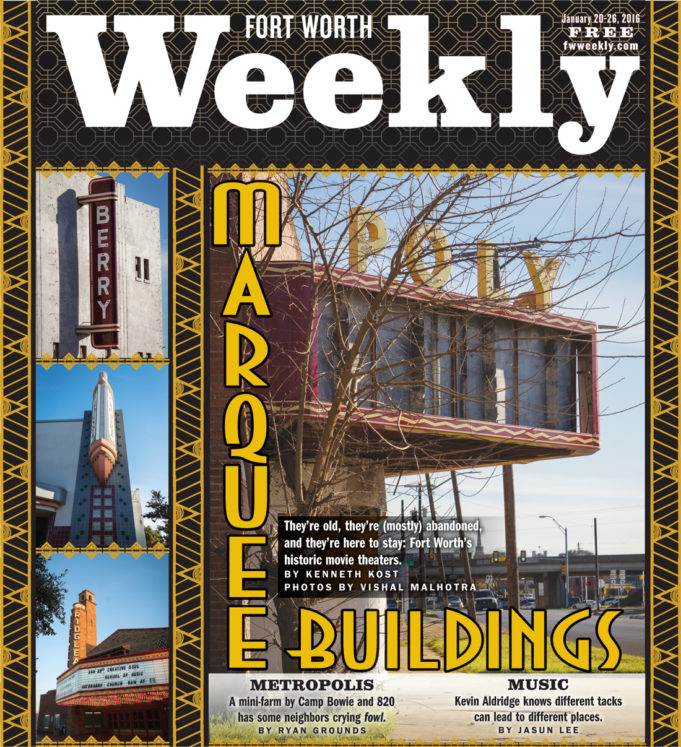








Of course, Riverside’s Tower theater (1941) was destroyed for a 7-11. But it was on the east side of town, so who gives a shit, amirite?
I could be just ignorant or naïve but I think Berry Theatre could be used for just movies. If it has more seats than most theatres take some out. The uniqueness of it could be a draw, indie films like McNutt is probably envisioning but also do some old classics. I’d go.